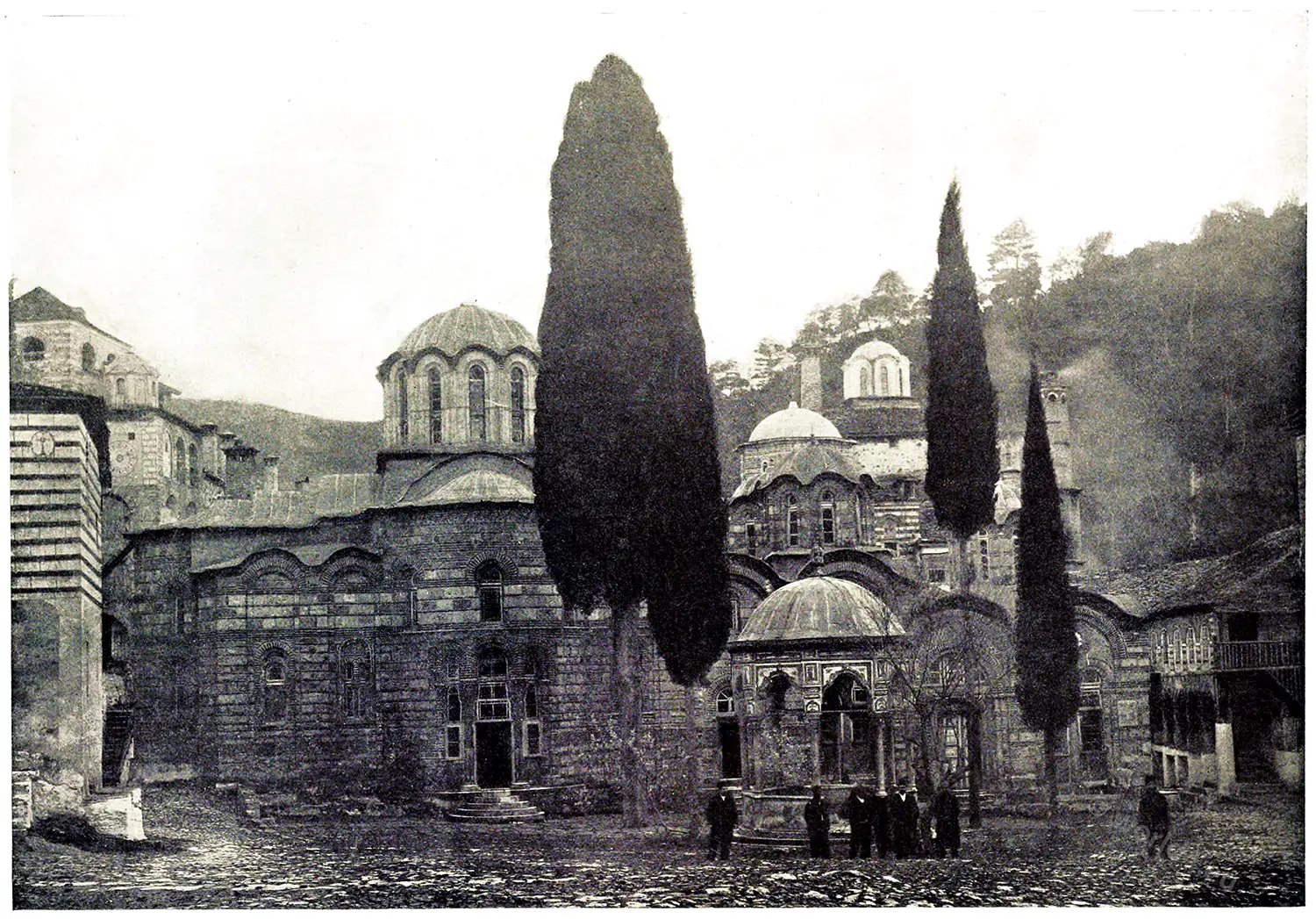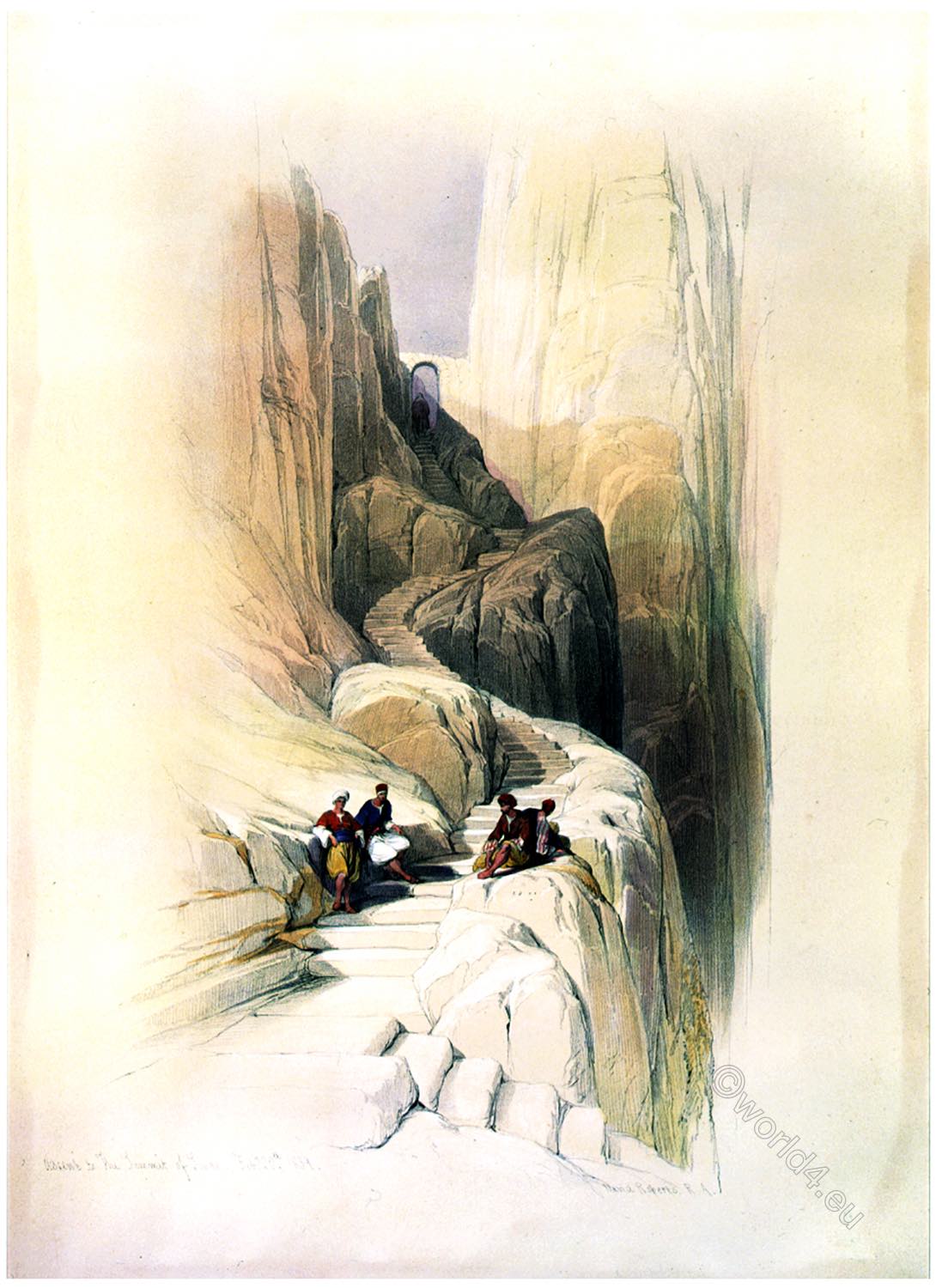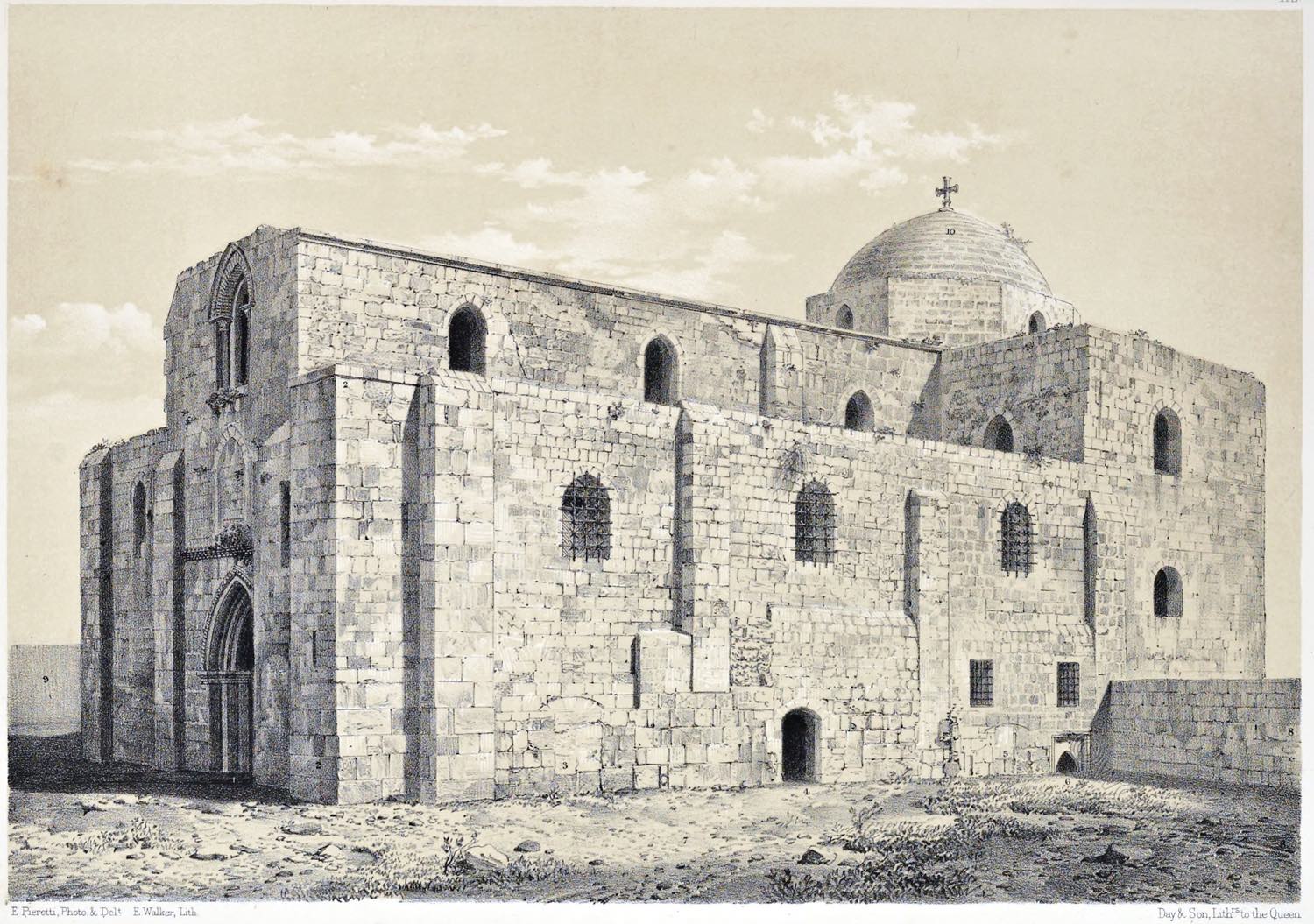
JERUSALEM, FROM THE MOUNT OF OLIVES.
by David Roberts
Olifet is a name connected with the most solemn remembrances of religion. The credulity of pilgrims or the artifices of monks may have done dishonor to the sanctity of Jerusalem; fiction has too often found sites for miracles, and legend has largely usurped the place of history; but nature remains: all the gi*eat features of the scene are unchangeable; and he who now explores the valleys or climbs the hills of this illustrious region, is secure that there, at least, he cannot be deceived.
Every outline of those hills, every undulation of those valleys, has the matchless influence of reality. He feels, that he is traversing the very ground which was traversed by those great agents of Providence, whose memory has given a character and an impulse to every succeeding period of mankind; that he stands where they taught, and suffered, and triumphed; that he looks on the landscape on which they so often gazed; and that he sees the same grandeur and beauty, the same wild majesty or cultured loveliness, which so often lifted their hearts in strains of holy exultation to the God and Father of nature and man.
Olivet is memorable in the national annals as the first resting-place of David, when he fled from the rebellion of Absalom.
“And David went up by the ascent of Mount Olivet, and wept as he went up, and had his head covered, and he went barefoot; and all the people that was with him covered every man his head, and they went up, weeping as they went up.” 1)
But, to us, it has still more solemn recollections. No portion of Palestine was more hallowed by the frequency of our Lord’s presence, and the events of his closing life, than the region of Olivet. To meditate, to pray, and to prophesy, He “went, as he was wont, to the Mount of Olives.” From its slope He uttered the great prediction of the calamities of the siege, and the fall of the people; there He underwent that most fearful and profound sorrow which commenced his sufferings; there, finally, He met his disciples before He ascended to heaven; and there, if the prophecy is to be literally interpreted, the world shall yet see a still more awful and astonishing scene.
“His feet shall stand in that day upon the Mount of Olives, which is before Jerusalem on the east; and the Mount of Olives shall cleave hi the midst thereof toward the east and toward the west, and there shall be a very great valley: and half of the mountain shall remove toward the north, and half of it toward the south. And ye shall flee to the valley of the mountains; . . . and the Lord my God shall come, and all the saints with thee.” 2)
At the foot of the Mount, and between it and the brook Kedron, is the “Garden of Gethsemane.” General consent adopts this as the scene of the “Agony.” It is still an olive-ground, with many neglected trees widely scattered over the slope of the hill; but the spot especially sacred in the estimation of the pilgrims, is a space of fifty-seven yards square, with a low stone inclosure; containing eight large olive-trees, apparently of great antiquity. “They are,” says a recent traveller,” still in a sort of ruined cultivation; the fences broken down and the trees decaying. Here no violence, or none that merits notice, has been done to the simplicity of the scene.” 3)
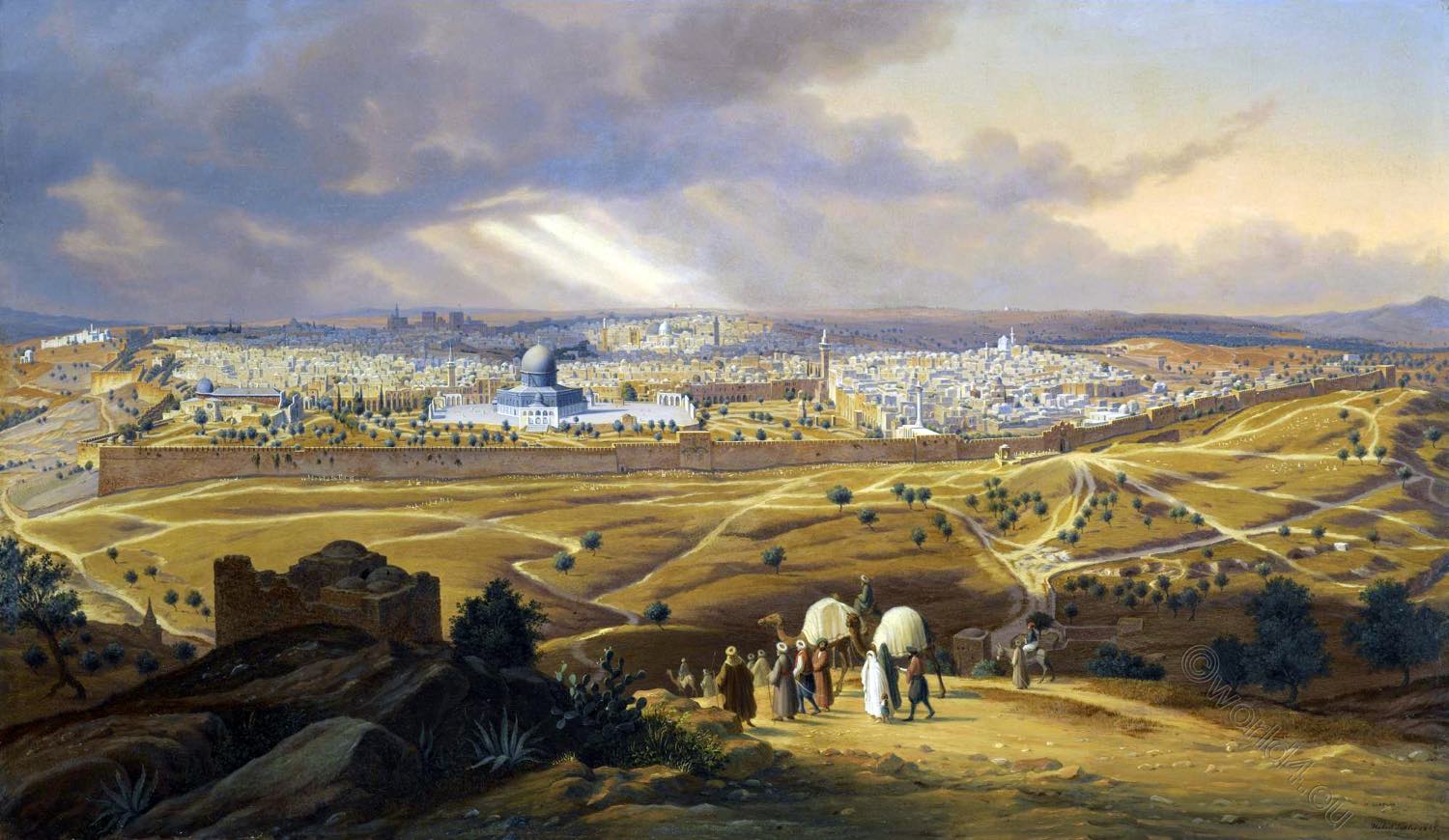
The view is extensive beyond the city, commanding the plain of Jericho, and, on the east, the valley of the Jordan, and a portion of the Dead Sea. On the summit of the mount is an Arab village, with a stone building in its centre, which is said to mark the spot of the “Ascension.” But our Lord ascended from Bethany.
1) 2 Samuel, xv. 30. 2) Zechariah, xiv. 4, 5. 3) Jewett’s Researches, p. 253.
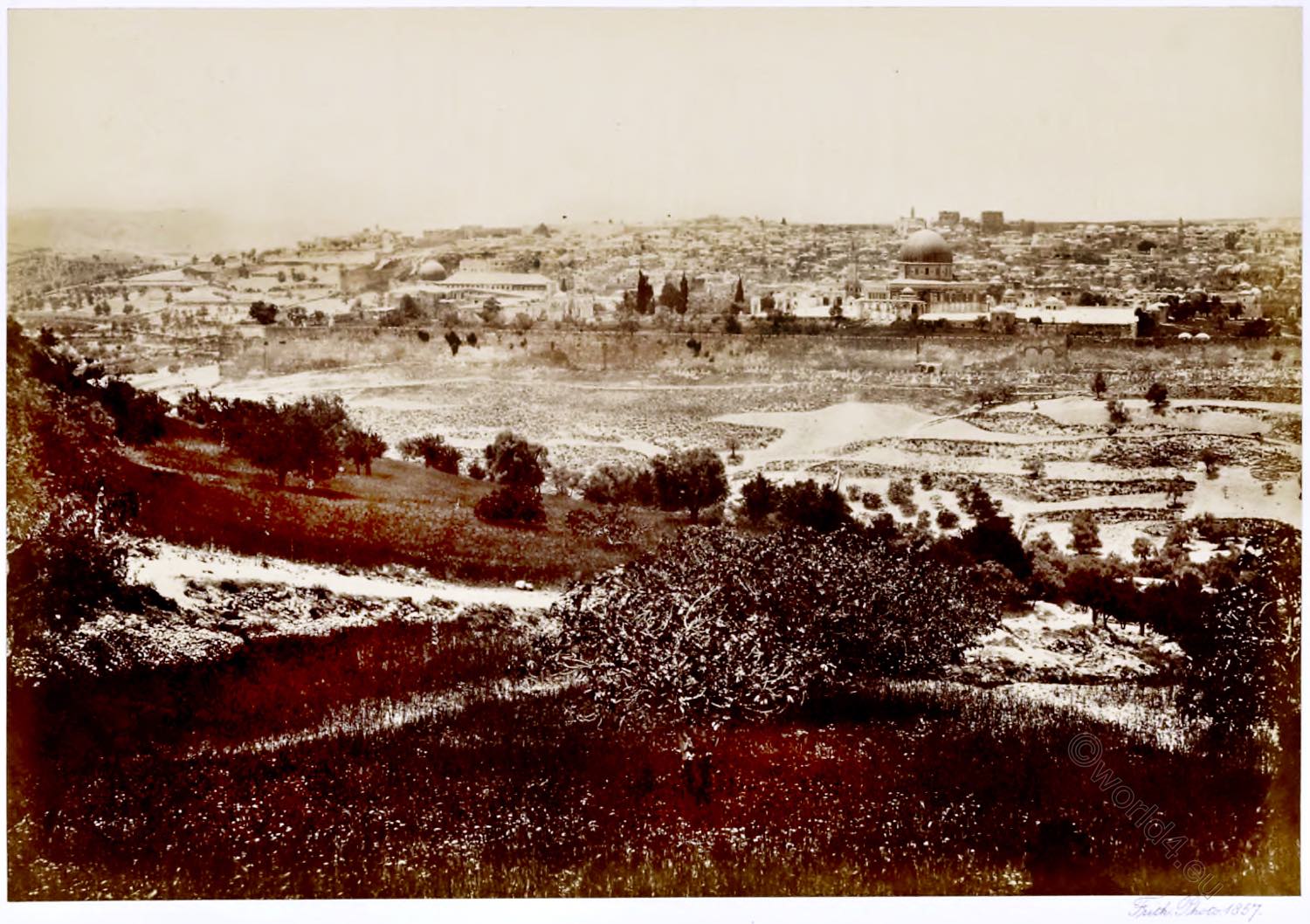
JERUSALEM, FROM THE MOUNT OF OLIVES. No. I.
By Francis Frith (English, 1822 – 1898); Jerusalem, Palestine.
THE only view of Jerusalem which does not disappoint the traveller is obtained from the hills on the east or north-east of the city. The view from Mount Scopas *) is very effective being at a distance of two or three miles from the city, the eye from thence embraces the whole in one glance—but it is too distant to enable one to dwell upon special localities and objects, as we are inclined to do when standing upon the place from which the present view is taken viz., a little below the Church of the Ascension, on the Mount of Olives.
*) The Scopus (Hebrew הַר הַצּוֹפִים Har ha-Zōfīm, engl. ‘Scout Mountain’; Greek σκοπός Skopos, ‘Guard, sentry’, Latin scopus) is a mountain in Jerusalem. With its height of 826 m, the (modern) Mount Scopus is known as a vantage point with a good view of Jerusalem. In the past, it had a strategic importance regarding the defence of the city.
Flavius Josephus wrote that from Mount Saphin (Σαφίν), whose name means “scout” (ancient Greek Σκοπός Skopós), Jerusalem and the Temple were first seen. This is the 813 m high spur, which is called Ras al-mesharif in Arabic. It is located northeast of the modern Mount Scopus in the area of the Etsel and Hahagana roads. It was here that the Roman army under Titus set up camp in 69 AD when it began the siege of Jerusalem, and it was also from here that the Crusader army attacked Jerusalem in 1099.
With the second part of this panoramic picture we give a map of modern Jerusalem, to which I recommend reference, in order the better to understand the details of this subject. Indeed, by comparing the map with this and the following picture, so perfect a key to the panorama may be obtained, as to render any description of mine almost needless.
From this position upon the Mount of Olives every building of importance is distinctly visible, owing to the regular slope of the city from the west towards the Valley of Jehoshaphat, which extends the whole length of my views, immediately under, and parallel with, the city wall.
The most conspicuous objects in this view are the various Moslem buildings upon the Temple area, amongst which the beautiful dome of the Mosque of Omar is the chief attraction. The area is, besides, laid out in gardens, with broad paved walks and groups of cypresses, and comprises nearly one-fifth of the whole space within the walls.
The circumference of the city walls, according to Robinson, is 4326 yards, or about two-and-a-half miles. The side which is presented in these two pictures is 2790 feet, of which the Temple area occupies 1530 feet. At the south-east corner of the wall (to the left of the picture) are some courses of very large and venerable stones, which have every appearance of being original Jewish masonry, and are amongst the very few relics of this character now remaining.
Of these stones Tipping, in Traill’s “Josephus,” says, “I consider this to be the finest specimen of mural masonry in the world ; the joints are close, and the finishing of the beveling and facing is so clean and fine, that, when fresh from the hands of the builder, it must have produced the effect of gigantic relieve panelling.”
At a distance of 1045 feet from the south- east corner of the wall is the Golden Gate, which has for centuries been walled up. It is clearly of Roman origin. Beneath it are seen the tombstones of a Mohammedan cemetery. In the distance, on the left of the picture, outside the city walls, and near the Zion Gate, is the “Tomb of David.” To the right of it are the extensive buildings of the Armenian Convent. Here, at Easter, some thousands of pilgrims are lodged.
The Armenians are said to be the wealthiest sect in Jerusalem. They are for the most part not natives; and those not attached to the convents are usually merchants. Over the dome of the Great Mosque is the Tower of Hippicus (or Phasael), and the Citadel. The Jaffa Gate is close by. On the extreme right of the picture is the dome of the Church of the Holy Sepulchre. The total population of modern Jerusalem is probably about twelve or fourteen thousand, of whom only about five thousand are Mohammedans.
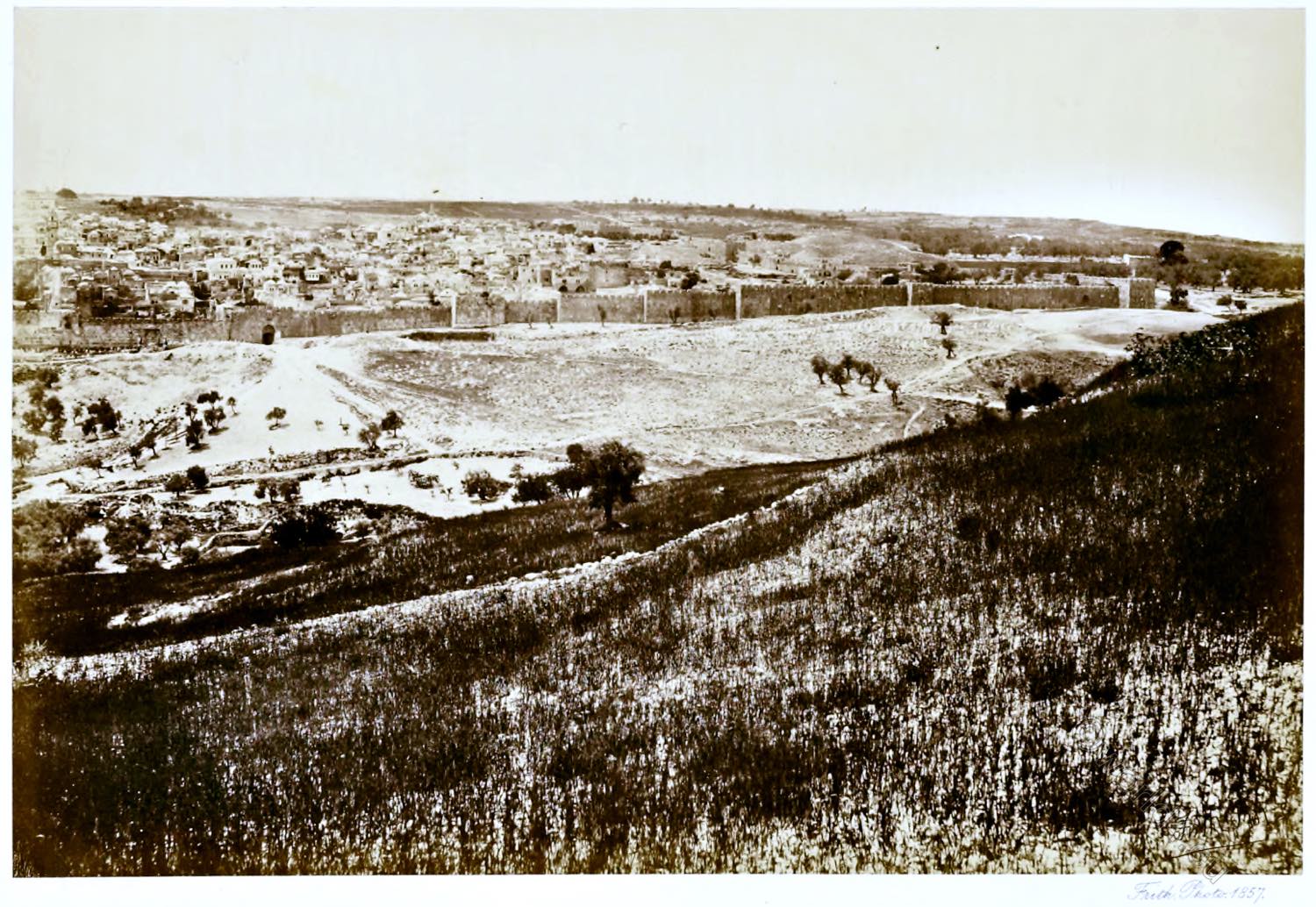
JERUSALEM, FROM THE MOUNT OF OLIVES. No. II.
By Francis Frith (English, 1822 – 1898); Jerusalem, Palestine.
THE view completes the panorama of Jerusalem, from the Mount of Olives. It is taken, as I stated in the previous article, from a point a little below the Church of the Ascension. We now present a Map of the city and neighborhood, which will enable the reader to identify most of the conspicuous objects in these views.
The Gate, from which several roads diverge, leading down into the Valley of Jehoshaphat, is St. Stephen’s. Over this gate are sculptured four lions, which shows, as Dr. Robinson remarks, that it was not the work of the Mohammedans. Jerusalem has now only four open gates—one on each of the four sides of the city.
The angle of the wall to the right of the present picture encloses a large tract of uninhabited ground covered with ruins. Passing round the corner of the wall, the traveller next reaches the Damascus Gate, near which is an extraordinary excavation, recently discovered. The entrance is outside the wall, and is very low ; but it leads to a perfect labyrinth of subterranean passages, which appear to have served as quarries; they extend under the greater part of the city.
The elevation of the Mount of Olives is, according to Schubert, 2556 Paris feet above the sea, 416 feet above the Valley of Jehoshaphat, and 177 feet above the highest point of Mount Zion.
Source:
- The Holy Land, Syria, Idumea, Arabia, Egypt, & Nubia, by David Roberts, George Croly, William Brockedon. London: Lithographed, printed and published by Day & Son, lithographers to the Queen. Cate Street, Lincoln’s Inn Fields, 1855.
- Egypt and Palestine by Francis Frith, 1858. Publisher: London, James S. Virtue, City Road and Ivy Lane. New York: 26, John Street.
Continuing



